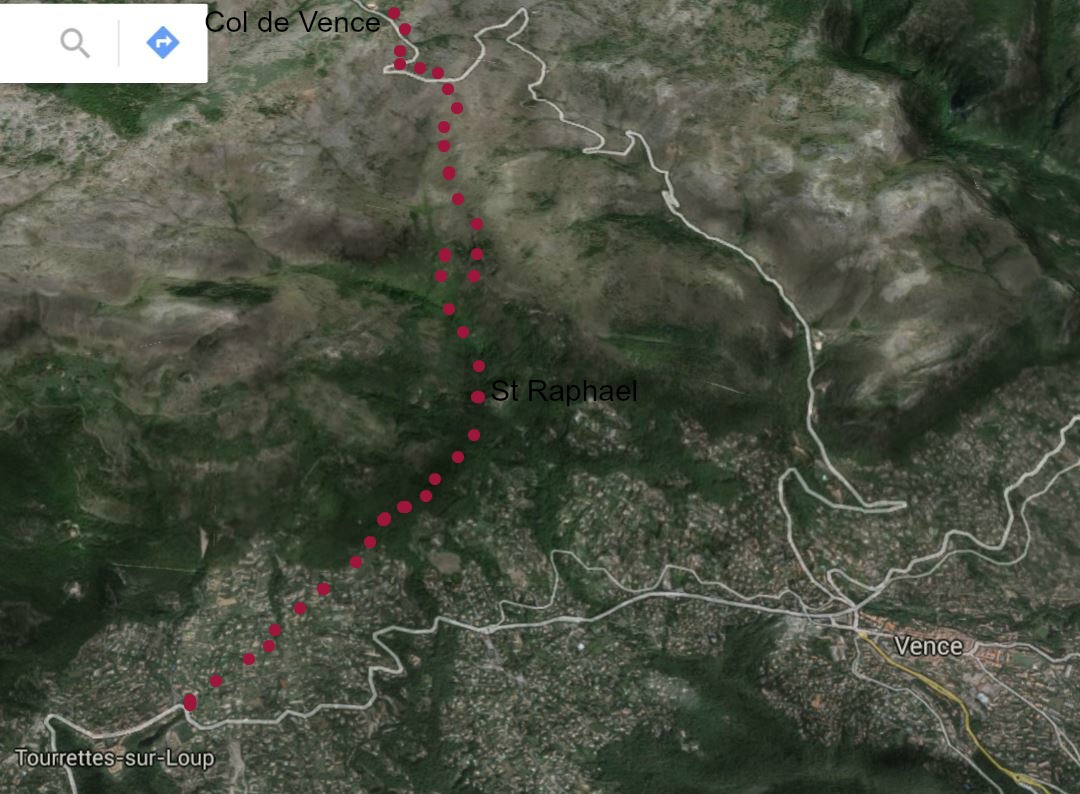Another Riviera winter hike: Pointe Siricocca from Sainte-Agnès
The hilltop village of Sainte-Agnès is situated high above Menton only about 4 km from the coast as the crow flies. At 700 m/2300ft, Sainte-Agnès claims to be the highest coastal village in Europe. The Saracens built their fortress here, and much later, in 1932 another fortress was built into the mountain, this time as part of the Maginot line.
Sainte-Agnès is at the crossroads of some interesting hiking trails. This time we hiked to Pointe Siricocca (1051 m or 3450 ft.) which offers extraordinary views over the Riviera coast, the neighbouring mountain tops as well as a glimpse of the snow-capped summits further north. The well-marked itinerary circles Pointe Siricocca clockwise, and makes a detour to the mountaintop from Col de Verroux .
We parked at the entrance (600 m) of Sainte-Agnès below the village. The trail first follows the paved road going to col des Blanquettes for about 300 m, then forks right and descends into a valley along a trail called Peyre Grosse, passing some houses and pastures. The route then follows a dirt track for about 500 m before turning left, and continues ascending in the woods. Signposts along the way guide you to the summit. Just before Col de Verroux (935 m), the trail widens as it connects with an ancient military route which continues as far as to the summit making the last push fast and easy.
Short term weather forecasts generally tend to be pretty accurate these days. We chose the day based on a very favourable forecast but unfortunately low coastal clouds started gathering at 1000+ m rapidly, probably because of the humid and warmer Mediterranean air hitting the coast after a cold night. Hence, the views down to the coast were limited as the video clip shows.
From the mountaintop, we walked back to Col de Verroux, then headed first east then south descending rapidly. The way back to Sainte-Agnès is well marked.
Elevation gain: 600 m/1970 ft.
Duration: 4 h
Distance: 9.5 km/5.9 miles
Map: IGN “Nice-Menton” Côte d’Azur No 3742 OT





















0 comments:
Note: only a member of this blog may post a comment.